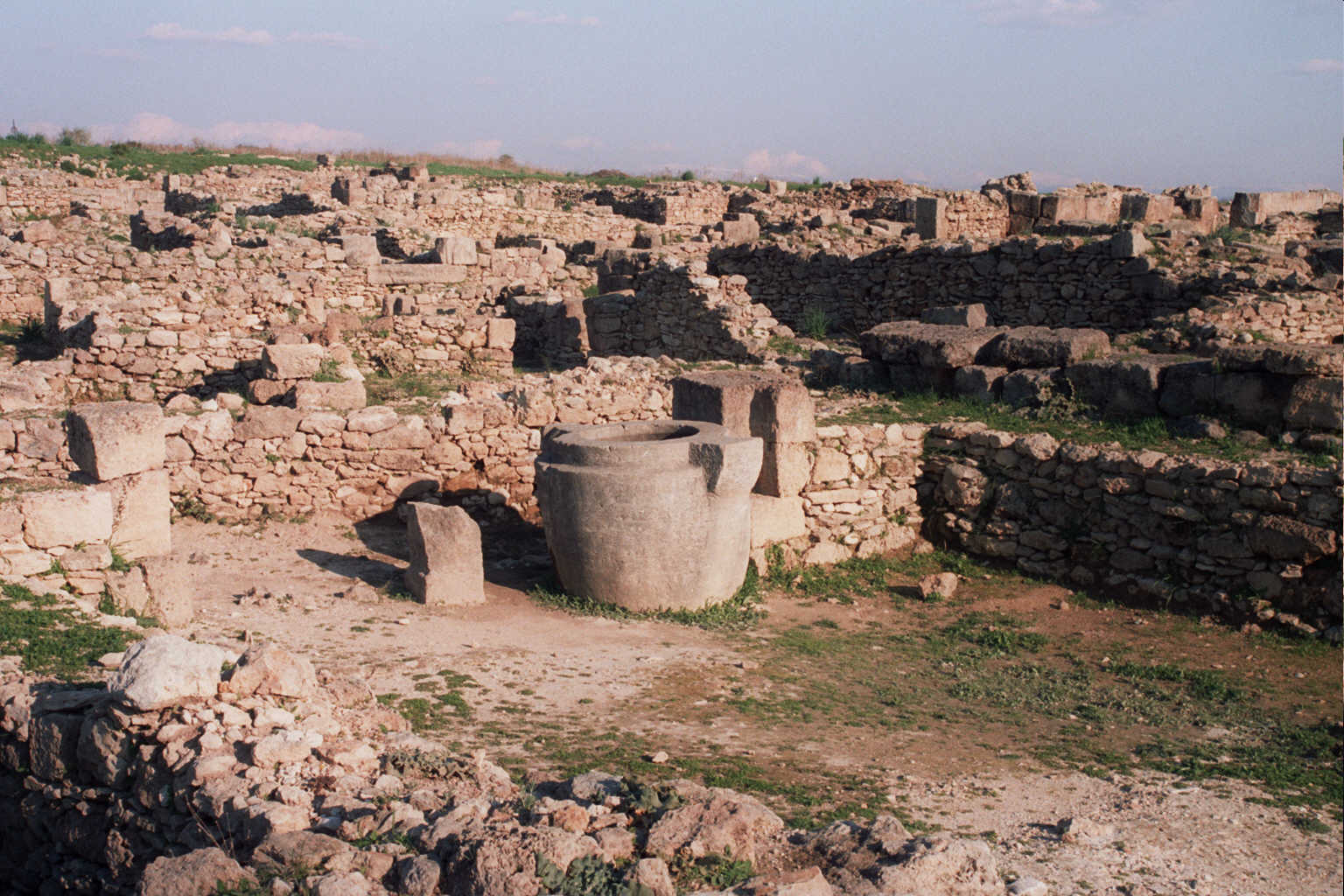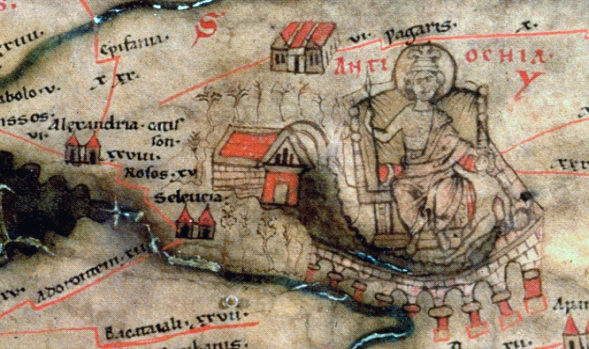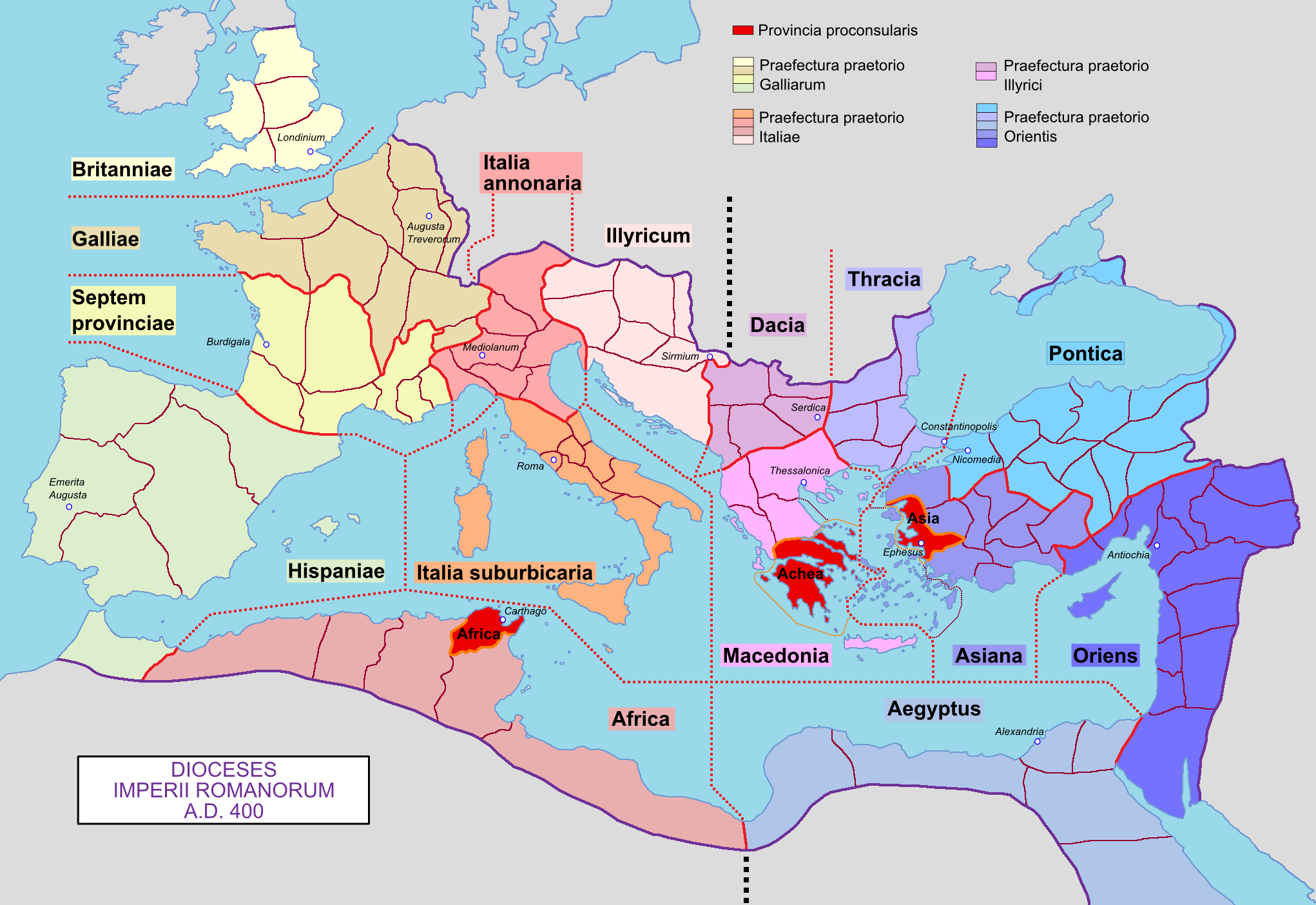|
Chalcis In Syria
Qinnašrīn (; ; ; ), was a historical town in northern Syria. The town was situated southwest of Aleppo on the west bank of the Queiq (historically, the Belus) and was connected to Aleppo with a major road during Roman times. Some scholars propose that the ruins of Qinnašrīn are located at al-Hadher to the east of the Queiq River, while Chalcis' location was at the modern Syrian village of Al-Iss, Aleppo Governorate to the west of the river. Others think that Qinnasrin has always been located at al-Iss from the Hellenistic to the Ayyubid period. History Hellenistic and Roman periods According to Appian, Chalcis was founded by Seleucus I Nicator (reigned 305-281 BC), and named after Chalcis in Euboea. Chalcis was distinguished from ''Chalcis sub Libanum'' (modern Anjar, Lebanon) by its river, the ancient Belus. The river—but not the city—was named for the Semitic god Bel or Baʿal. In 92 AD, Chalcis received the title "Flavia", in honor of Emperor Domitian, to be kn ... [...More Info...] [...Related Items...] OR: [Wikipedia] [Google] [Baidu] |
Roman Road
Roman roads ( ; singular: ; meaning "Roman way") were physical infrastructure vital to the maintenance and development of the Roman state, built from about 300 BC through the expansion and consolidation of the Roman Republic and the Roman Empire. They provided efficient means for the overland movement of armies, officials, civilians, inland carriage of official communications, and trade goods. Roman roads were of several kinds, ranging from small local roads to broad, long-distance highways built to connect cities, major towns and military bases. These major roads were often stone-paved and metaled, cambered for drainage, and were flanked by footpaths, bridleways and drainage ditches. They were laid along accurately surveyed courses, and some were cut through hills or conducted over rivers and ravines on bridgework. Sections could be supported over marshy ground on rafted or piled foundations.Corbishley, Mike: "The Roman World", page 50. Warwick Press, 1986. At the peak of ... [...More Info...] [...Related Items...] OR: [Wikipedia] [Google] [Baidu] |
Canaanite Religion
Canaanite religion or Syro-Canaanite religions refers to the myths, cults and ritual practices of people in the Levant during roughly the first three millennia BC. Canaanite religions were polytheistic and in some cases monolatristic. They were influenced by neighboring cultures, particularly ancient Egyptian and Mesopotamian religious practices. The pantheon was headed by the god El and his consort Asherah, with other significant deities including Baal, Anat, Astarte, and Dagon. Canaanite religious practices included animal sacrifice, veneration of the dead, and the worship of deities through shrines and sacred groves. The religion also featured a complex mythology, including stories of divine battles and cycles of death and rebirth. Archaeological evidence, particularly from sites like Ugarit, and literary sources, including the Ugaritic texts and the Hebrew Bible, have provided most of the current knowledge about Canaanite religion. Sources and history Knowledge ... [...More Info...] [...Related Items...] OR: [Wikipedia] [Google] [Baidu] |
Syria Prima
Syria I or Syria Prima ("First Syria", in , ''Prṓtē Suríā'') was a Byzantine province, formed c. 415 out of Syria Coele. The province survived until the Muslim conquest of Syria in the 630s. History Syria I emerged out of Syria Coele, which during the reign of Antiochus III was one of the four satrapies in its region that included Phoenicia, Idumea, and an unknown territory that included Palestine. The Syria Coele region along the Euphrates was separated to form the province of ''Euphratensis''. After c. 415 ''Syria Coele'' was further subdivided into ''Syria I'' (or ''Syria Prima''), with the capital remaining at Antioch, and ''Syria II'' (''Syria Secunda'') or ''Syria Salutaris'', with capital at Apamea on the Orontes. In 528, Justinian I carved out the small coastal province '' Theodorias'' out of territory from both provinces. The region remained one of the most important provinces of the Byzantine Empire. It was governed by a Consularis based in Antioch. Syria Prima ... [...More Info...] [...Related Items...] OR: [Wikipedia] [Google] [Baidu] |
Late Antiquity
Late antiquity marks the period that comes after the end of classical antiquity and stretches into the onset of the Early Middle Ages. Late antiquity as a period was popularized by Peter Brown (historian), Peter Brown in 1971, and this periodization has since been widely accepted. Late antiquity represents a cultural sphere that covered much of the Mediterranean world, including parts of Europe and the Near East.Brown, Peter (1971), ''The World of Late Antiquity (1971), The World of Late Antiquity, AD 150-750''Introduction Late antiquity was an era of massive political and religious transformation. It marked the origins or ascendance of the three major monotheistic religions: Christianity, rabbinic Judaism, and Islam. It also marked the ends of both the Western Roman Empire and the Sasanian Empire, the last Persian empire of antiquity, and the beginning of the early Muslim conquests, Arab conquests. Meanwhile, the Byzantine Empire, Byzantine (Eastern Roman) Empire became a milit ... [...More Info...] [...Related Items...] OR: [Wikipedia] [Google] [Baidu] |
Chosroes I
Khosrow I (also spelled Khosrau, Khusro or Chosroes; ), traditionally known by his epithet of Anushirvan ("the Immortal Soul"), was the Sasanian Empire, Sasanian King of Kings of History of Iran, Iran from 531 to 579. He was the son and successor of Kavad I (). Inheriting a reinvigorated empire at Iberian War, war with the Byzantines, Khosrow I signed a peace treaty with them in 532, known as the Perpetual Peace (532), Perpetual Peace, in which the Byzantine emperor Justinian I paid 11,000 pounds of gold to the Sasanians. Khosrow then focused on consolidating his power, executing conspirators, including his uncle Bawi. Dissatisfied with the actions of the Byzantine clients and vassals, the Ghassanids, and encouraged by Ostrogoth envoys from Italy, Khosrow violated the peace treaty and declared war against the Byzantines in 540. He sacked the major city of Antioch and deported its population to Persia. In 541, he invaded Lazica and made it an Iranian protectorate, thus initiating ... [...More Info...] [...Related Items...] OR: [Wikipedia] [Google] [Baidu] |
Persia
Iran, officially the Islamic Republic of Iran (IRI) and also known as Persia, is a country in West Asia. It borders Iraq to the west, Turkey, Azerbaijan, and Armenia to the northwest, the Caspian Sea to the north, Turkmenistan to the northeast, Afghanistan to the east, Pakistan to the southeast, and the Gulf of Oman and the Persian Gulf to the south. With a Ethnicities in Iran, multi-ethnic population of over 92 million in an area of , Iran ranks 17th globally in both List of countries and dependencies by area, geographic size and List of countries and dependencies by population, population. It is the List of Asian countries by area, sixth-largest country entirely in Asia and one of the world's List of mountains in Iran, most mountainous countries. Officially an Islamic republic, Iran is divided into Regions of Iran, five regions with Provinces of Iran, 31 provinces. Tehran is the nation's Capital city, capital, List of cities in Iran by province, largest city and financial ... [...More Info...] [...Related Items...] OR: [Wikipedia] [Google] [Baidu] |
Maurice (emperor)
Maurice (; ; 539 – 27 November 602) was Eastern Roman emperor from 582 to 602 and the last member of the Justinian dynasty. A successful general, Maurice was chosen as heir and son-in-law by his predecessor Tiberius II. Maurice's reign was troubled by almost constant warfare. After he became emperor, he brought the Byzantine–Sasanian War of 572–591, war with Sasanian Persia to a Battle of the Blarathon, victorious conclusion. The empire's eastern border in the South Caucasus was vastly expanded and, for the first time in nearly two centuries, the Romans were no longer obliged to pay the Persians thousands of pounds of gold annually for peace. Afterward, Maurice Maurice's Balkan campaigns, campaigned extensively in the Balkans against the Pannonian Avars, Avars—pushing them back across the Danube by 599. He also conducted campaigns across the Danube, the first Roman emperor to do so in over two centuries. In the west, he established two large semi-autonomous provinces ... [...More Info...] [...Related Items...] OR: [Wikipedia] [Google] [Baidu] |
Byzantine Empire
The Byzantine Empire, also known as the Eastern Roman Empire, was the continuation of the Roman Empire centred on Constantinople during late antiquity and the Middle Ages. Having survived History of the Roman Empire, the events that caused the fall of the Western Roman Empire in the 5th centuryAD, it endured until the fall of Constantinople to the Ottoman Empire in 1453. The term 'Byzantine Empire' was coined only after its demise; its citizens used the term 'Roman Empire' and called themselves 'Romans'. During the early centuries of the Roman Empire, the western provinces were Romanization (cultural), Latinised, but the eastern parts kept their Hellenistic culture. Constantine the Great, Constantine I () legalised Christianity and moved the capital to Constantinople. Theodosius I, Theodosius I () made Christianity the state religion and Greek gradually replaced Latin for official use. The empire adopted a defensive strategy and, throughout its remaining history, expe ... [...More Info...] [...Related Items...] OR: [Wikipedia] [Google] [Baidu] |
Archdiocese
In church governance, a diocese or bishopric is the ecclesiastical district under the jurisdiction of a bishop. History In the later organization of the Roman Empire, the increasingly subdivided provinces were administratively associated in a larger unit, the diocese (Latin ''dioecesis'', from the Greek term διοίκησις, meaning "administration"). Christianity was given legal status in 313 with the Edict of Milan. Churches began to organize themselves into dioceses based on the civil dioceses, not on the larger regional imperial districts. These dioceses were often smaller than the provinces. Christianity was declared the Empire's official religion by Theodosius I in 380. Constantine I in 318 gave litigants the right to have court cases transferred from the civil courts to the bishops. This situation must have hardly survived Julian, 361–363. Episcopal courts are not heard of again in the East until 398 and in the West in 408. The quality of these courts wa ... [...More Info...] [...Related Items...] OR: [Wikipedia] [Google] [Baidu] |
Seleucia Pieria
Seleucia in Pieria (Greek Σελεύκεια ἐν Πιερίᾳ), also known in English as Seleucia by the Sea, and later named Suedia, was a Hellenistic town, the seaport of Antioch ad Orontes ( Syria Prima), the Seleucid capital, modern Antakya (Turkey). The city was built slightly to the north of the estuary of the river Orontes, between small rivers on the western slopes of the Coryphaeus, one of the southern summits of the Amanus Mountains. According to Pausanias and Malalas, there was a previous city here named Palaeopolis ("Old City"). At present, it is located at the seaside village of Çevlik near the town of Samandağ in the Hatay Province of Turkey. Seleucia, Apamea, Laodicea, and Antioch formed the Syrian tetrapolis. History Seleucid period Seleucia Pieria was founded in ca. 300 BC by Seleucus I Nicator, one of the successors of the Macedonian conqueror Alexander the Great and the founder of the Seleucid Empire. The Macedonians called the landscape Pieri ... [...More Info...] [...Related Items...] OR: [Wikipedia] [Google] [Baidu] |
Suffragan
A suffragan bishop is a type of bishop in some Christian denominations. In the Catholic Church, a suffragan bishop leads a diocese within an ecclesiastical province other than the principal diocese, the metropolitan archdiocese; the diocese led by the suffragan is called a suffragan diocese. In the Anglican Communion, a suffragan bishop is a bishop who is subordinate to a metropolitan bishop or diocesan bishop (bishop ordinary) and so is not normally jurisdictional in their role. Suffragan bishops may be charged by a metropolitan to oversee a suffragan diocese and may be assigned to areas which do not have a cathedral. Catholic Church In the Catholic Church, a suffragan is a bishop who heads a diocese. His suffragan diocese, however, is part of a larger ecclesiastical province, nominally led by a metropolitan archbishop. The distinction between metropolitans and suffragans is of limited practical importance. Both are diocesan bishops possessing ordinary jurisdiction o ... [...More Info...] [...Related Items...] OR: [Wikipedia] [Google] [Baidu] |
Bishopric
In church governance, a diocese or bishopric is the ecclesiastical district under the jurisdiction of a bishop. History In the later organization of the Roman Empire, the increasingly subdivided provinces were administratively associated in a larger unit, the diocese (Latin ''dioecesis'', from the Greek term διοίκησις, meaning "administration"). Christianity was given legal status in 313 with the Edict of Milan. Churches began to organize themselves into dioceses based on the civil dioceses, not on the larger regional imperial districts. These dioceses were often smaller than the provinces. Christianity was declared the Empire's official religion by Theodosius I in 380. Constantine I in 318 gave litigants the right to have court cases transferred from the civil courts to the bishops. This situation must have hardly survived Julian, 361–363. Episcopal courts are not heard of again in the East until 398 and in the West in 408. The quality of these court ... [...More Info...] [...Related Items...] OR: [Wikipedia] [Google] [Baidu] |







